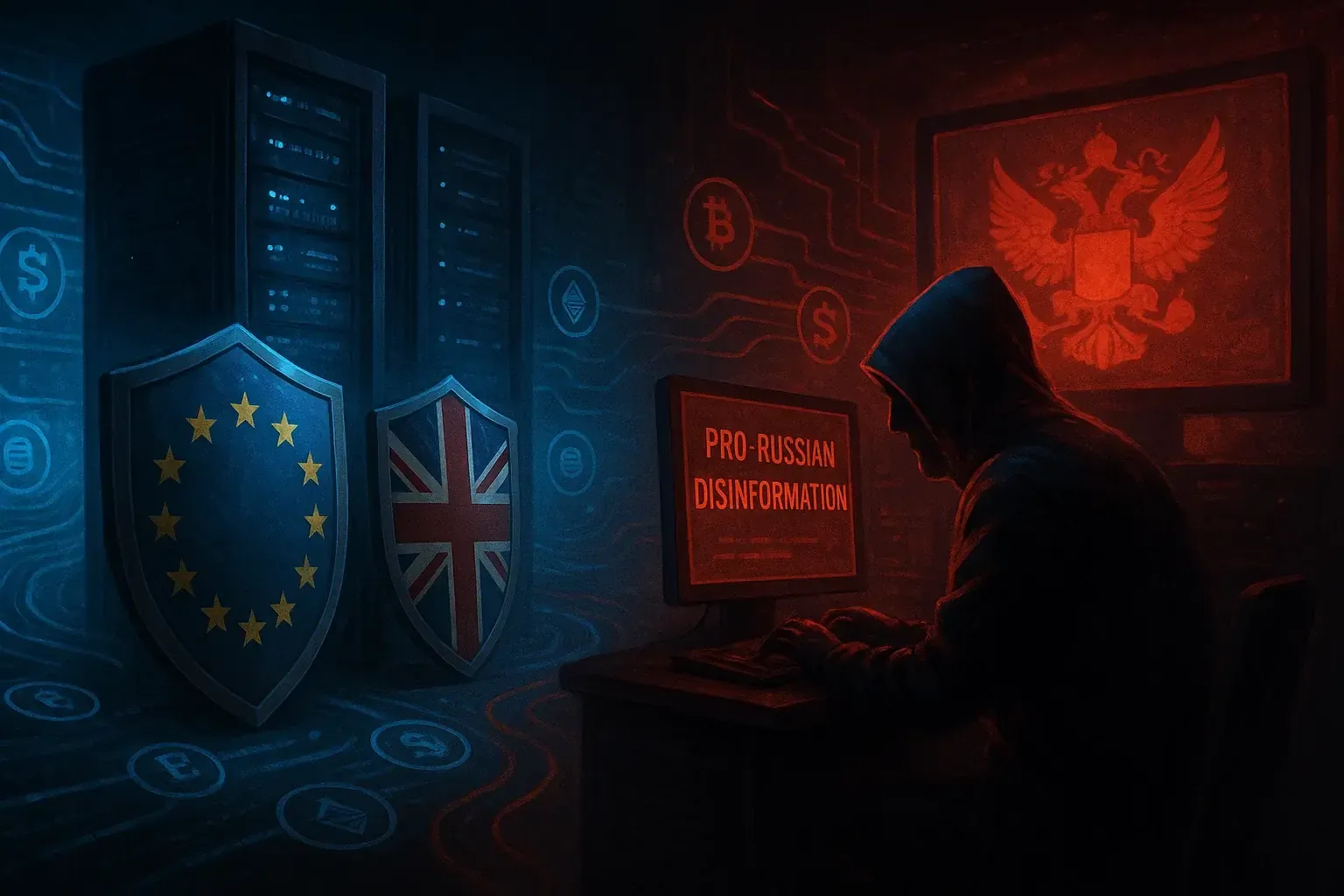In an attempt to counter strategic threats, the European Union has adopted a series of new sanctions targeting the abuse of cryptocurrencies: the circumvention of economic restrictions, illicit financing, and the dissemination of disinformation with a pro-Russian bias.
Sanctions Targets: Individuals And Companies
The sanctions target nine individuals and six companies accused of using crypto tools to evade restrictions, transfer funds and conduct propaganda activities. Until recently, the EU limited the sanctions to individual users or platforms, but now recognises a broader threat: the financial flows that serve as a vehicle for disinformation.
Figures Involved: From AussieCossack to Disinformation
The key figures include Simeon Boykov, known by the pseudonym AussieCossack. According to analysts at TRM Labs, he allegedly organised a fundraiser to produce a fake video about election fraud in Georgia in 2024, with the aim of casting doubt on the results of the US vote.
Sanction them all out of existence https://t.co/6inTir0SaT
- ФЦП "ПРАВОНАПАДЕНИЕЕ" (@Pravonapadenie) July 17, 2025
The financing was done via Russian exchanges with poor KYC controls, cash transfers and crypto services on the darknet. EU authorities admit that these multi-layered protection schemes make disinformation a powerful tool of foreign influence.
Companies in the mirror: The Case A7 OOO And The Interferences In Moldova
The company A7 OOO, linked to the oligarch Ilan Shor (known for interfering in the Moldovan 2024 elections and EU accession referendum), came under fire. According to sources, around $1 billion was transferred by Moldovan banks through this structure.
A7 OOO used its own stablecoin, A7A5, pegged to the rouble and operating on the Grinex platform (successor to Garantex, which was also sanctioned). According to the EU, these transactions facilitated dual-use supplies from China to Russia: technologies and materials applicable in both civil and military spheres.
Change of strategic route focus on financial flows
Instead of focusing exclusively on natural or legal persons, the EU now targets the financial infrastructure that fuels disinformation schemes. This shows how digital currencies are increasingly seen as central tools in hybrid warfare and political blackmail.
The countermeasures have also been coordinated with the UK, which has imposed similar sanctions against A7 OOO, strengthening inter-state cooperation in the field of crypto regulation.
The EU intends to strengthen the monitoring of high-risk crypto transactions: from exchange services to tokenized financial assets. This initiative is part of a broader strategy against hybrid threats and foreign interference.
Four Key Areas According to Analysts:
- Control of flows related to pro-Russian propaganda;
- Direct sanctions against those who finance fake campaigns;
- Restrictions on access to opaque digital platforms;
- Coordinated actions with partners from London to Washington.
Results And Significance of the Strategy
This move by the EU is not a simple reaction to global challenges, but a real security mechanism, aimed not at the effects, but the causes of threats. It becomes clear: the fight against strategic disinformation and global political manipulation now relies on financial instruments and well-structured economic oversight.
Behind what is happening is a profound reorganisation of the approach to regulating digital currencies: they are no longer just a technology, but become a priority area of national and global security.
In the future, one can expect an increasing role for flow analysis, greater scrutiny of stablecoins, and a strengthening of collaboration with crypto exchanges, especially in jurisdictions with poor standards of control.
Conclusion
The EU sanctions package introduced on 16 July 2025 could represent a turning point, not only in the global regulation of the crypto sector, but also in the new digital security architecture.








